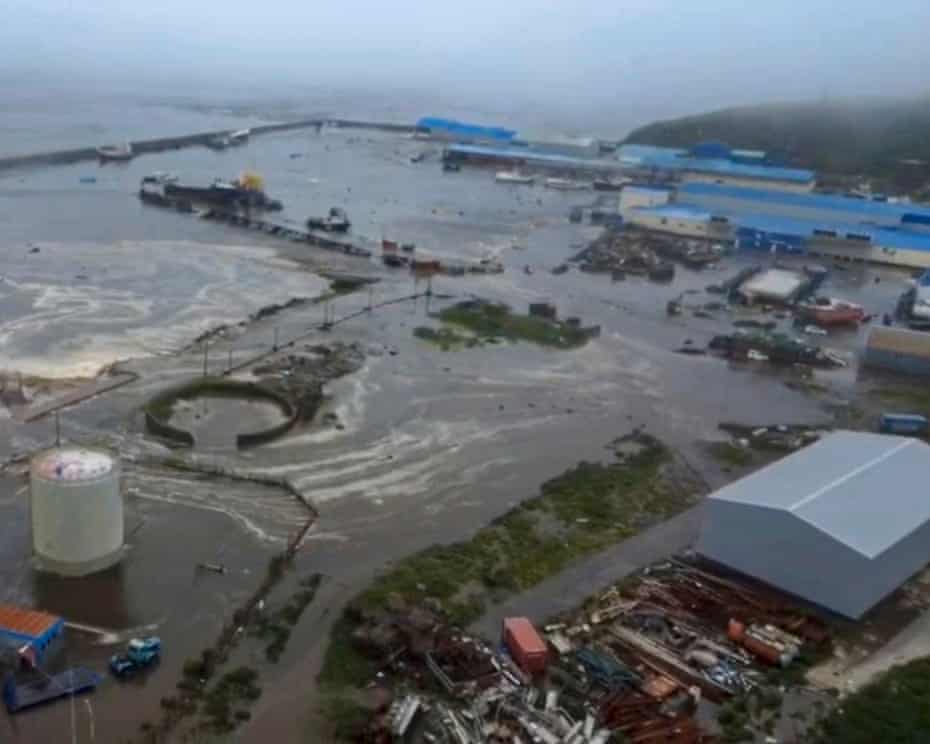Kamchatka, Russia | 31 July 2025
A massive magnitude 8.8 earthquake struck the seismically active Kamchatka Peninsula in Russia’s Far East on 30 July 2025, triggering widespread tsunami alerts across the Pacific Ocean. While the earthquake caused significant alarm and localized damage, effective emergency response and global coordination helped prevent major loss of life.
A Jolt Felt Across Oceans
The undersea quake, recorded at a shallow depth of approximately 10–20 km and located around 110 km east-southeast of Petropavlovsk-Kamchatsky, is among the strongest ever recorded in Russia. The tremor set off tsunami warnings as far as Japan, Hawaii, Alaska, the U.S. West Coast, South America, and even parts of French Polynesia.
In Kamchatka, waves as high as 4 meters reached coastal areas, forcing rapid evacuations. Some infrastructure-including a fish processing plant and sections of the shoreline in Severo-Kurilsk-suffered water damage, but no fatalities have been reported. Around 2,000 residents were evacuated as a precaution.
Heroism Amidst Tremors
In an extraordinary display of composure and duty, a group of Russian surgeons continued an ongoing operation during the earthquake, bracing equipment and maintaining calm inside a trembling operating theatre. The footage quickly went viral, symbolizing the resilience of frontline workers during crises.
Earthquake Linked to Volcanic Activity
The earthquake appears to have triggered renewed activity in Mount Klyuchevskoi, Russia’s tallest and most active volcano, located about 450 km north of the epicenter. Lava flows and minor eruptions have been observed, although scientists say the connection is part of the region's complex tectonic dynamics, where the Pacific Plate subducts beneath the Eurasian Plate.
Tsunami Fears Subside Globally
Although tsunami alerts briefly caused alarm across the Pacific Rim, wave heights elsewhere remained modest: approximately 1.5 meters in Japan, 5-6 feet in Hawaii, and 3-4 feet along parts of the U.S. coast. No major destruction occurred beyond Russia’s immediate vicinity. Within hours, most alerts were lifted as wave energy dissipated.
Why Moscow Remained Unshaken
Interestingly, while the quake was monumental, Moscow and most of central Russia felt no tremors. This is due to the country’s vast geological diversity—Moscow lies on a geologically stable continental plate far from active fault lines, a natural barrier to seismic waves traveling such long distances.
Lessons in Preparedness
This event is a stark reminder of the unpredictable power of nature and the importance of disaster preparedness-especially for communities in coastal and tectonically active zones. The timely alerts, rapid evacuation protocols, and international monitoring systems likely saved countless lives.
Scientists continue to monitor aftershocks and volcanic activity in the region. Authorities have advised residents and coastal areas to remain alert but calm.
Ecosphere News Insight
In a world increasingly vulnerable to natural disasters, this earthquake underscores the value of early warning systems, cross-border coordination, and the resilience of people and institutions. It also highlights the interconnectedness of seismic and volcanic systems and the need for sustained investment in earth science research and public education.
For more updates on global environmental and geophysical events, stay connected with Ecosphere News.📍 Reporting from Kathmandu with global sources